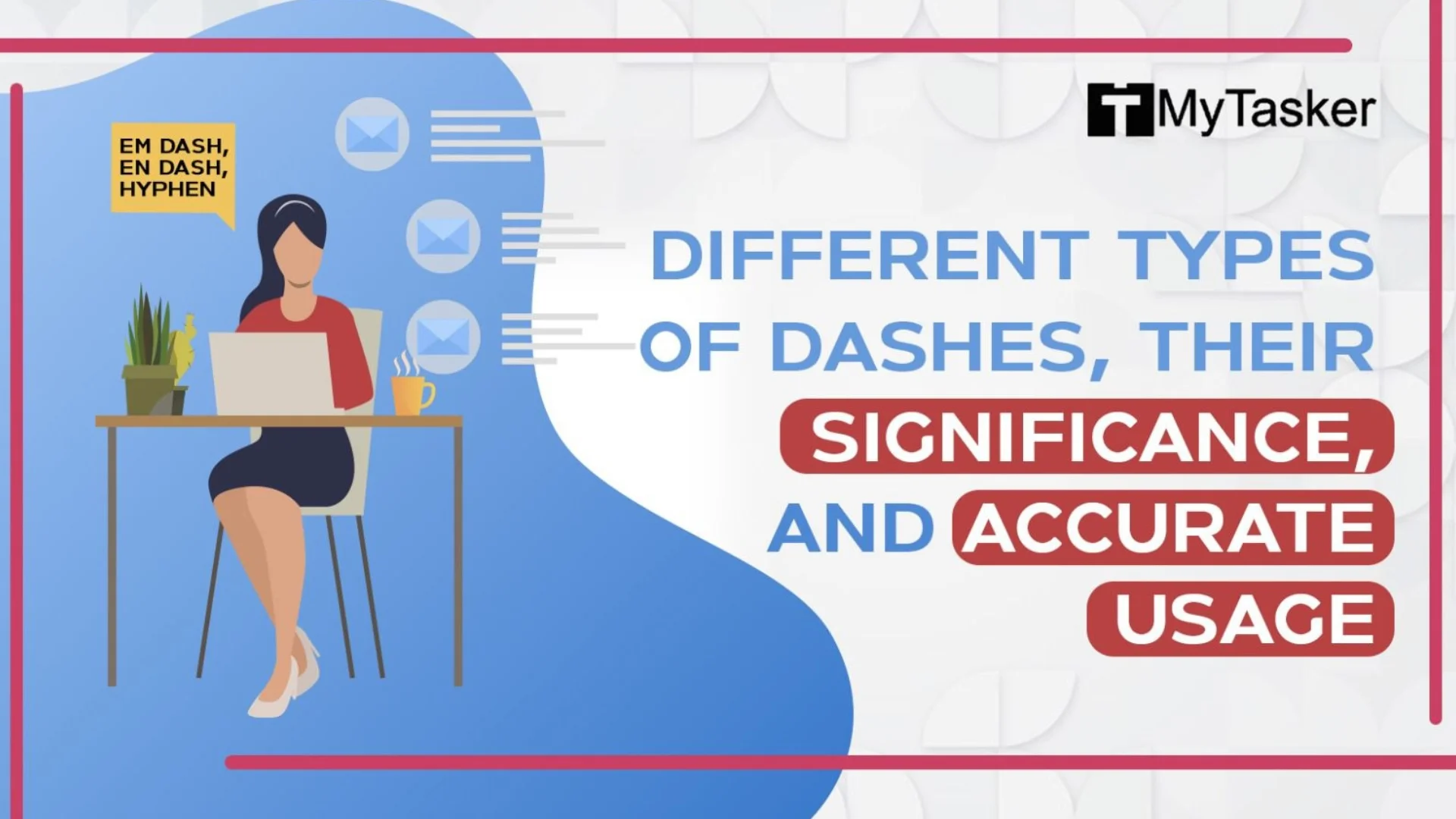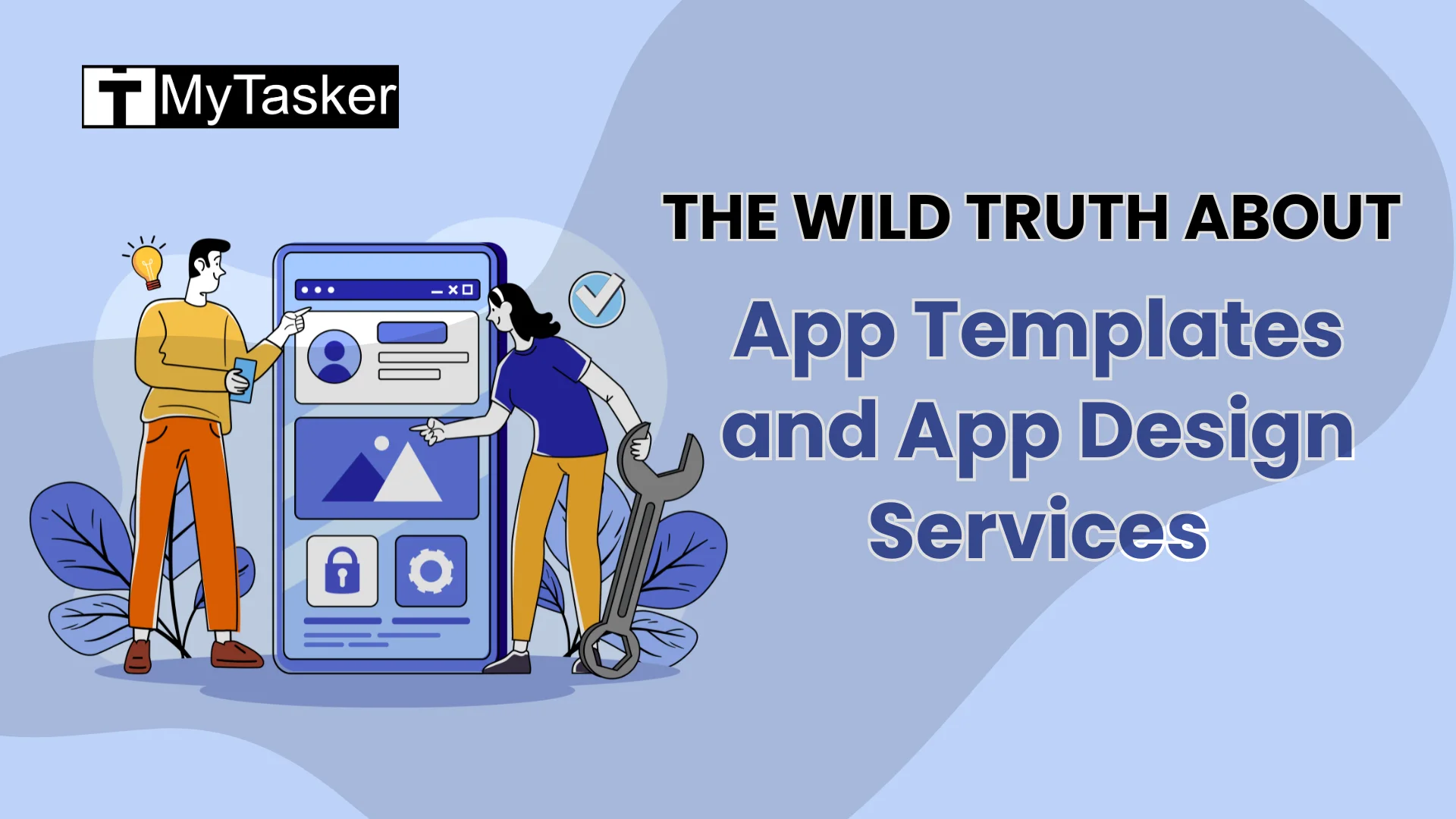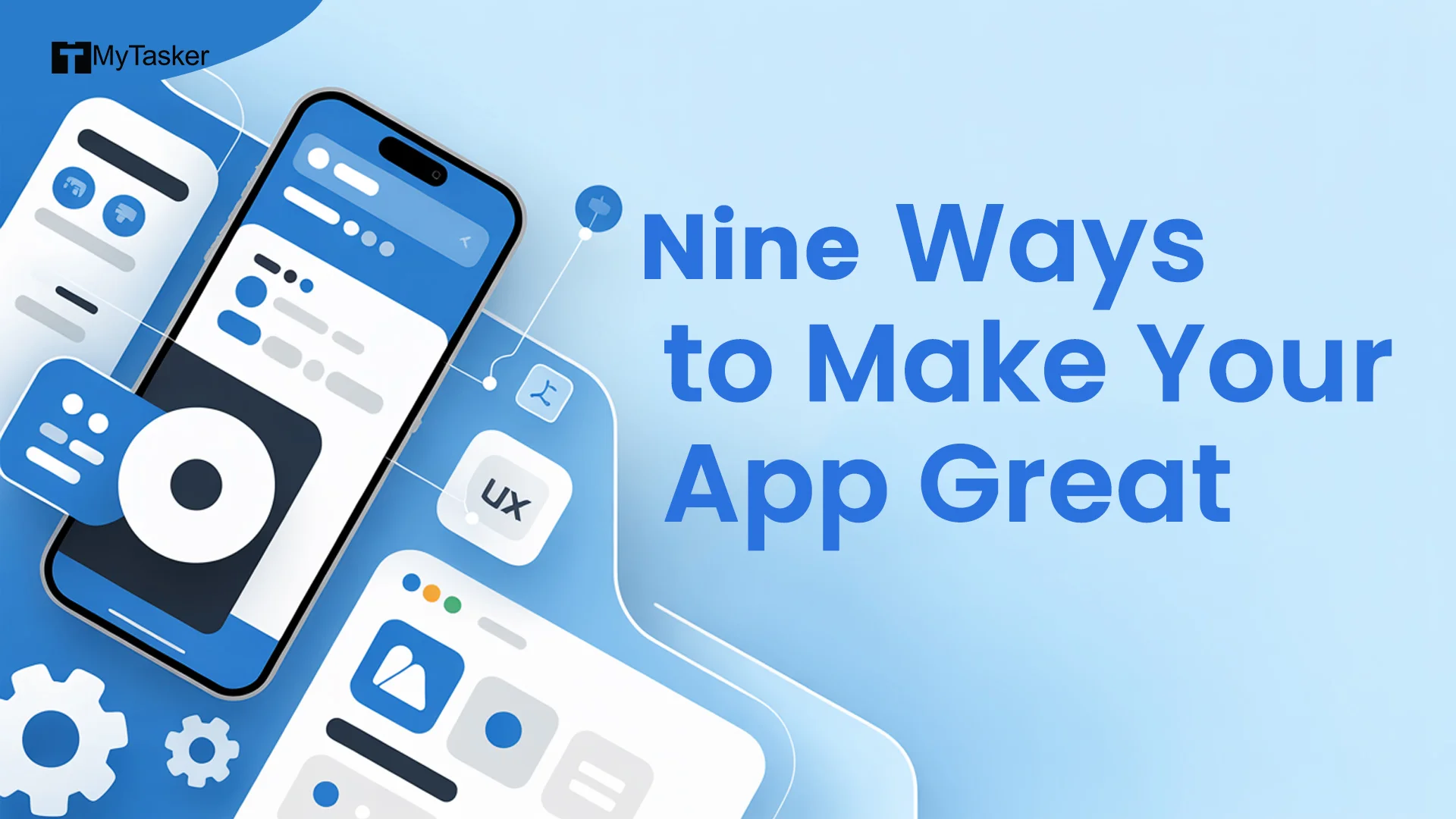Were you aware that there are three types of dashes in English, and while they look slightly different, they are all used differently under various circumstances and contexts?
If not, then no worries; we have got you covered. By the end of this blog, you can distinguish and understand the difference between the em dash, en dash, and hyphen (the three types of dashes) like a pro!
So let’s jump in and learn how to use em dash, en dash, and hyphen.
Use visual and kinesthetic approaches to learn more about them, as they help register the information a lot better. We have included large images of these dashes below for your reference and understanding. You will soon be able to see the distinctive changes in their appearance and the distinctive usage they demand. In short, today’s blog is going to be quite informative. So sit tight and get ready for a quick lesson.

The Em Dash
The Em Dash (also known as the long dash) is the longest of all the dashes in the English language. The em dash is named after the width of the letter "M" in a given typeface, making it longer than an en dash and twice as long as a hyphen.
Uses Of Em Dash
-
Emphasis and Separation:
-
It can replace commas, parentheses, or colons to emphasize or separate phrases within a sentence.
-
Example: "She finally answered—after a long silence—that she would not be attending the party."
-
Interruption or Break:
-
It indicates an abrupt change in thought, interruption, or a break in continuity.
-
Example: "The results of the experiment—although unexpected—were fascinating."
-
Lists:
-
It can be used to replace bullets or numbers in a list, especially when items contain commas.
-
Example: "The ingredients included eggs, flour, and sugar—all of which were locally sourced."
-
Attribution:
-
It's used to attribute quotes or emphasize the source of a statement.
-
Example: "He quoted Shakespeare's famous line—' To be or not to be'—in his speech."
Significance:
-
Em dashes add emphasis and clarity to sentences by setting off information or creating a more informal or dramatic tone compared to commas or parentheses.
The Em Dash Examples:
-
Emphasis: "Her favourite fruit—strawberries—are in season."
-
Separation: "The team—despite their setbacks—managed to win."
-
Interruption: "I was thinking of going to the—oh, never mind."
-
List: "She packed her bags with clothes—jeans, shirts, and jackets."
Em dashes add emphasis and clarity to sentences by setting off information or creating a more informal or dramatic tone compared to commas or parentheses.
The En Dash
The En Dash (–) is a more reserved punctuation mark, often the overlooked middle child but equally essential for creating clarity. It is named for its width, corresponding to the width of a capital "N." The En Dash primarily indicates ranges and relationships, making connections where the Hyphen might fall short.
Uses of En Dash and En Dash Examples:
-
Indicating Ranges: The En Dash denotes a range of values, such as dates, times, or numbers.
-
Example: The event runs from 10:00 a.m.–2:00 p.m.
-
Connecting Complex Compound Adjectives: When an adjective phrase involves multi-word elements, the En Dash clarifies the relationship between the words.
-
Example: The Nobel Prize-winning author gave a riveting lecture.
-
Showing Relationships and Connections: The En Dash can indicate a connection or relationship between words, especially when they represent a conflict or contrast.
-
Example: The north-south divide is a persistent issue in many countries.
En dashes are particularly useful in complex compound words where clarity is needed, especially when multiple-word proper nouns or hyphenated compounds are involved. Here are some more examples and explanations:
New York–London flight: "New York–London" forms a compound proper noun phrase. Using an en dash helps connect these two proper nouns that function together as a unit.
The post–World War II era: In this example, "post–World War II" is a compound adjective modifying "era." The en dash clarifies the relationship between "post" and "World War II," indicating that they together modify "era."
Jack-in-the-box–like gizmo: This example illustrates a complex compound where "jack-in-the-box–like" modifies "gizmo." The en dash helps to connect "jack-in-the-box" and "like," indicating that together, they describe the nature of the "gizmo."
Chicago–Milwaukee route: Similar to the flight example, this en dash connects two distinct proper nouns ("Chicago" and "Milwaukee") that together form a route.
The Spider-Man–inspired costume: Here, "Spider-Man–inspired" is a compound adjective describing "costume." The en dash clarifies that "Spider-Man" and "inspired" work together to modify "costume."
The Hyphen
The Hyphen is used to connect the same word separated by compounds in a compound word or to join words and create compound terms. In other words, a hyphen (-) is a punctuation mark used to connect words and indicate that they have a combined meaning or are linked in a sentence's grammar. Its primary functions include:
-
Compound Words: Hyphens are used in compound adjectives (e.g., well-known author) and compound nouns (e.g., mother-in-law) to link words together and clarify meaning.
-
Prefixes and Suffixes: They join prefixes (e.g., ex-president, anti-inflammatory) and suffixes to words, especially to avoid confusion or jumbled-up letter combinations.
-
Word Breaks: Hyphens break words at the end of a line to improve readability and ensure the text flows well without large gaps.
-
Avoiding Ambiguity: Hyphens help distinguish between meanings (e.g., re-sign vs. resign).
Despite its simplicity, the Hyphen plays an important role in achieving clarity and conciseness by preventing misinterpretation. Even though it is the shortest of the dashes, its impact on readability and meaning is substantial. Hyphens are not required in Closed Compound Words and Open Compound Words.
Open and Close Compound Words
Closed compound words are created by putting two words together without any space (e.g., "toothpaste," "waterproof").
Open compound words are two words sitting next to each other with a space between them (e.g., "ice cream," "full moon").
There’s no need for hyphens, as compound words are already connected or separated in their own ways.
To figure out if a compound word is open or closed, consider:
-
Meaning: If the combined words create a new meaning (e.g., "blackboard" isn't just a black board), it's likely closed. If the meaning is just the two words combined (e.g., "full moon"), it's likely open.
-
Usage: Common words are often closed (e.g., "notebook," "sunglasses"). Newer or specific terms are often open (e.g., "life coach," "search engine").
-
Pronunciation: Closed compound words often stress the first word (NOTEbook), while open compound words may have equal stress (full MOON).
If unsure, consult a dictionary!
You will become more adept at recognizing open and closed compound words with practice!
Examples of Hyphens
-
The editor-in-chief reviewed the article before publication.
-
Explanation: "Editor-in-chief" is a compound noun describing a senior editorial position.
-
She received a well-deserved promotion after years of hard work.
-
Explanation: "Well-deserved" is a compound adjective emphasizing the merit of the promotion.
-
The anti-inflammatory medication helped reduce the swelling.
-
Explanation: "Anti-inflammatory" is a compound adjective describing the medication's purpose.
-
They attended a high-profile event in the city.
-
Explanation: "High profile" is a compound adjective describing the event's prominence.
-
His brother-in-law owns a successful business downtown.
-
Explanation: "Brother-in-law" is a compound noun indicating a family relationship.
-
The up-to-date software improved the system's performance.
-
Explanation: "Up-to-date" is a compound adjective indicating the software's current status.
-
She is a self-taught musician with incredible talent.
-
Explanation: "Self-taught" is a compound adjective describing how musicians acquired their skills.
-
Eco-friendly products are popular among environmentally conscious consumers.
-
Explanation: "Eco-friendly" is a compound adjective describing environmentally safe products.
-
The long-term effects of the medication are still unknown.
-
Explanation: "Long-term" is a compound adjective describing the duration of the effects.
-
The high-speed train reduced travel time significantly.
-
Explanation: "High-speed" is a compound adjective describing the train's velocity.
Some other examples of hyphenated compound words include the following:
Family Relationships
-
Father-in-law
-
Mother-in-law
-
Sister-in-law
-
Brother-in-law
-
Son-in-law
-
Daughter-in-law
Adjectives Describing People
-
Good-looking
-
Well-dressed
-
Old-fashioned
-
Cold-hearted
-
Level-headed
-
Quick-witted
Adjectives Describing Objects
-
Life-size
-
State-of-the-art
-
Old-fashioned
-
Up-to-date
-
High-tech
-
Well-made
Numbers and Ages
-
Twenty-one
-
Thirty-three
-
Forty-five-year-old
-
Sixty-seven
-
Ninety-nine
-
Eighty-eight-year-old
Time and Frequency
-
Long-term
-
Short-term
-
Part-time
-
Full-time
-
Mid-July
-
Year-round
Directions and Locations
-
North-west
-
South-east
-
In-between
-
Cross-country
-
On-site
-
Off-campus
Compound Nouns
-
Editor-in-chief
-
Self-esteem
-
Mother-in-law
-
Father-in-law
-
Brother-in-law
-
Daughter-in-law
Compound Verbs
-
Double-check
-
Cross-examine
-
Trouble-shoot
-
Air-condition
-
Test-drive
-
Hand-pick
Miscellaneous
-
Run-of-the-mill
-
Free-for-all
-
Know-it-all
-
Merry-go-round
-
Topsy-turvy
-
Up-to-date
These examples highlight the momentousness of hyphens in connecting words to form new meanings, clarify relationships, and ensure exactitude in language.
In the massive world of punctuation, the em dash, en dash, and hyphen are the unsung heroes of clarity, emphasis, and connection. Whether you're making a point, bridging a range, tallying distance, or linking compound words, mastering these dashes adds panache to your writing—because sometimes, in the dance of words, it's all about the dash!
Unlock the power of perfectly synchronized prose with MyTasker. Our expert team ensures your blogs and articles shine with perfect dashes and punctuation. Elevate your content and captivate your audience—let's craft your next masterpiece together!















